- News
- Reviews
- Bikes
- Components
- Bar tape & grips
- Bottom brackets
- Brake & gear cables
- Brake & STI levers
- Brake pads & spares
- Brakes
- Cassettes & freewheels
- Chains
- Chainsets & chainrings
- Derailleurs - front
- Derailleurs - rear
- Forks
- Gear levers & shifters
- Groupsets
- Handlebars & extensions
- Headsets
- Hubs
- Inner tubes
- Pedals
- Quick releases & skewers
- Saddles
- Seatposts
- Stems
- Wheels
- Tyres
- Tubeless valves
- Accessories
- Accessories - misc
- Computer mounts
- Bags
- Bar ends
- Bike bags & cases
- Bottle cages
- Bottles
- Cameras
- Car racks
- Child seats
- Computers
- Glasses
- GPS units
- Helmets
- Lights - front
- Lights - rear
- Lights - sets
- Locks
- Mirrors
- Mudguards
- Racks
- Pumps & CO2 inflators
- Puncture kits
- Reflectives
- Smart watches
- Stands and racks
- Trailers
- Clothing
- Health, fitness and nutrition
- Tools and workshop
- Miscellaneous
- Buyers Guides
- Features
- Forum
- Recommends
- Podcast
review
£77.00
VERDICT:
Well made and functional, but price is quite steep given limitations imposed by shape and attachment system
Weight:
211g
Contact:
At road.cc every product is thoroughly tested for as long as it takes to get a proper insight into how well it works. Our reviewers are experienced cyclists that we trust to be objective. While we strive to ensure that opinions expressed are backed up by facts, reviews are by their nature an informed opinion, not a definitive verdict. We don't intentionally try to break anything (except locks) but we do try to look for weak points in any design. The overall score is not just an average of the other scores: it reflects both a product's function and value – with value determined by how a product compares with items of similar spec, quality, and price.
What the road.cc scores meanGood scores are more common than bad, because fortunately good products are more common than bad.
- Exceptional
- Excellent
- Very Good
- Good
- Quite good
- Average
- Not so good
- Poor
- Bad
- Appalling
The Apidura Handlebar Pack (Compact) is a simple, no-nonsense bag, large enough to carry a few essential items on rides straying into multi-day territory, but still very much targeted at the minimal end of the touring spectrum. While simplicity is generally a desirable trait for anything touring related, the Apidura's shape and attachment system do place certain limitations on its use, more of which below.
Material-wise, Dimension Polyvalent VX21, also known as X-Pac, is used for the main body of the bag. This fabric has become the standard for 'bikepacking' bags and more technically orientated panniers, offering a balanced trade-off between the competing interests of weight, waterproofing and durability. To improve the latter, a large patch of Cordura 600D is sewn onto the rear where the pack is likely to be in contact with handlebars, cables, brake levers and the like.
> Find your nearest dealer here
The Pack is double-ended and uses roll-top closures, such as you would typically find on dry bags, so you can easily adjust the width and internal volume depending on the load being carried. It attaches directly to the handlebar using two 'Hypalon' reinforced webbing straps and ladderlock-style buckles.
In common with the Apidura seatbag I reviewed earlier this year, the bar bag includes some bungee cord that can be used to strap items to the outside of the bag – useful for stashing a light piece of clothing on the go. Rounding off the list of features is some reflective detailing on the front, plus a couple of 'female' buckles on the rear, designed to easily allow Apidura's own Accessory Pocket to be clipped in. This expands the Pack's carrying capacity from a nominal 9 litres up to 14 litres.
All in all then, there's nothing particularly revolutionary about the design, but it is well executed and constructed to the same high quality standards as other Apidura products reviewed on road.cc.
Tarmac or trail?
Where things get a little less clear cut is the Pack's intended application. The Apidura website displays images of it attached to a flared drop-bar road bike, but the blurb underneath claims that it 'works best with mountain bike handlebars'. The reason for this is the bag's shape – considering it as a cylinder, it has a relatively small diameter and a relatively long length. This means that for standard drop-bar use, where the ends must be rolled up a lot to clear the hoods and enable use of the drops, the internal volume becomes so small as to be impractical for storing anything much at all.
With flared drop bars more, but not all, of the bag's potential volume can be exploited. However, it is still only suitable for items that would be needed at the start/end of a ride, as access on the go isn't what it's designed for (that's where the Accessory Pocket comes in).
Conversely, the wide, slim shape that makes it unsuitable for road bike use is exactly what is required for mountain bikes, where width isn't an issue but tyre clearance is. When strapped to a flat handlebar, the bag's full 9L volume can be filled. This is just about perfect for lightweight overnight trips in good conditions – my bivi bag and summer sleeping bag fit snuggly inside – when used in combination with rear panniers or a large saddlebag, such as Apidura's own.
For less benign conditions, and rain in particular, you have to factor in additional dry bags for anything that mustn't get wet; while the VX21 fabric is waterproof and will shrug off light spray and drizzle, the seams aren't taped and moisture does eventually get in. (Apidura recommends you do this, on its website.)
Beyond its shape, the other factor limiting the bag's use is the way it attaches to the bike. Since the bag cinches directly onto the handlebar with no additional spacers, you'll need to carefully route shift and brake cables (or hydraulic hosing) around the bag to avoid pinching anything. This may require extending cable/brake housings to loop them out of the way which, frankly, is a bit of a pain.
The other issue with the simple two-strap attachment system is stability. As it's not triangulated, the bag has a tendency to flap up and down over rough terrain, pivoting around the points where the webbing straps attach to the main body. This can be mitigated, and even eliminated completely, by making sure the bag is pulled up tight against the underside of shifters and brake levers, but this then increases the chances that the bag pinches cable and brake housing as it exits the levers. In practice, I found that it tended to work best when used with brake levers where the hoses exit in-line with the master cylinders – the latest generation of Shimano hydraulic brakes, for example – and the levers set up quite flat.
> Beginner's guide to carrying stuff on your bike
If you can sort out the housing routing issue then the system is remarkably stable and the benefits of its simplicity – the ease of attachment/removal, the lack of parts that could fail, and so on – come into play. I've been using the handlebar bag for over a year now, mostly off-road on the mountain bike, and haven't experienced any issues with the straps loosening over rough terrain. Its durability has also been proven as, despite some slight discolouration from all the mud that's been thrown at it, the fabric and seams are still going strong.
Overall, the Pack performs well and is well built to withstand the rigours of touring, but a few features will limit its appeal. The shape means it's best suited to flat handlebars, and access on the go isn't a strong point, making it best suited to carry overnight kit on multi-day rides. The second potential limitation is the attachment system which, though simple and effective if it fits, will likely require some tinkering with your cockpit setup to stop it pinching any cable housing. There is the risk that the Pack will simply not work for some setups and because of these issues, the asking price of £77 feels a little on the high side.
Verdict
Well made and functional, but price is quite steep given limitations imposed by shape and attachment system
road.cc test report
Make and model: Apidura Handlebar Pack Compact
Size tested: 9L
Tell us what the product is for, and who it's aimed at. What do the manufacturers say about it? How does that compare to your own feelings about it?
Apidura says: "Designed to make use of the space below the handlebars, eliminating the need for a front rack.
Handlebar Packs are made expressly to carry the light, compressible and bulky items of your long distance adventure, or multi-day bikepacking kit to create a larger and more balanced load on multi-day adventures or when tackling steep climbs and technical trails.
Modular and customizable; this pack can be used standalone for minimalist applications, or expanded with an Accessory Pocket to provide a handy space for additional food, lightweight electronics, and other essentials.
Constructed from high quality materials and optimized for durability and weight.
Available in two sizes, to accommodate a range of cycling needs.
– Regular: Ideal for long haul cycle touring.
– Compact: Ideal for endurance road racers and randonneurs.
Please note that, while the body fabric of this pack is waterproof, due to the stitching process used to assemble the product, there is the possibility for water to enter the packs through the seams when exposed to a sustained rain. We recommend using an internal dry bag for contents that must remain absolutely dry (such as electronics)."
Tell us some more about the technical aspects of the product?
Technical:
Expandable to 14 litres with optional accessory pocket (sold separately).
Works best with mountain bike handle bars, but can be reduced to fit within a road style set up.
Features:
Two-point handlebar attachment system, reinforced with anti-slip hypalon, for maximum stability and to protect handlebars from abrasion.
Dual roll-top closures protect gear while providing maximum flexibility to adjust capacity according to rider needs.
Bungee cord tie down feature for added storage.
Reflective graphics and webbing detail to enhance rider safety.
Material:
Dimension Polyant VX21 is the main body fabric. This 4 layer laminated fabric offers a combination of superior waterproofness, light weight, ultra high abrasion and tear resistance, and low stretch.
600D Cordura is used in high abrasion areas to provide additional protection against friction and puncture.
Woojin Kross buckles are used in the fastening system for enhanced reliability.
Care:
Packs should be washed by hand to preserve the integrity of the laminated body fabric. You can use a mild diluted soap if needed and air dry the pack.
Do not machine wash or dry. Do not iron.
Rate the product for quality of construction:
8/10
As with other Apidura bags reviewed, the materials and quality of construction are all top notch.
Rate the product for performance:
6/10
The Pack performs well but comes with a couple of limitations. Firstly, its wide, slim shape makes it unsuitable for drop-bars where space between the shifters is limited. Also, since the bag isn't all that stiff by itself, it works best when fully packed. Other "bikepacking" brands tend to use a harness style design which is more flexible, since the internal volume can be reduced/expanded by using different sizes of dry bag. The second issue is the attachment system, with requires tinkering to get it to fit without fouling brake hosing, or having the bag wobble up and down on rough terrain.
Rate the product for durability:
8/10
The bag has withstood a year's worth of abuse, mostly off-road, with the only signs of wear being a slight discoloration of the fabric.
Rate the product for weight (if applicable)
9/10
The simple design and hi-tech materials make this a very light bag.
Rate the product for value:
5/10
At £77, the Pack is quite expensive, especially considering its limitations. It is a little more than offerings from competitors such as Wildcat, Alpkit and Alpamayo.
Tell us how the product performed overall when used for its designed purpose
Overall, the Pack performs well and is well built to withstand the rigours of touring, but a few features will limit its appeal. Firstly, as Apidura states, it's best suited to flat handlebars because of its wide, slim shape. Furthermore, because of the roll-top closures, access on the go isn't a strong point, making the bag best suited to carrying overnight kit on multi-day rides. The second potential limitation is the attachment system which, though simple and effective if it fits, will likely require some tinkering of your cockpit setup to stop it pinching any cable housing.
Tell us what you particularly liked about the product
The durability of the bag – it has held up really well to a lot of use in the full gamut of weather and trail conditions.
Tell us what you particularly disliked about the product
The tinkering required to get the Pack to attach without fouling any cables. Once this is sorted, though, the simple two-strap arrangement makes removal/attachment quick and easy.
Did you enjoy using the product? Yes
Would you consider buying the product? I would probably go for a harness style system for more load carrying flexibility.
Would you recommend the product to a friend? Yes, with caveats.
Use this box to explain your score
It's well made and, once attached correctly, very functional, but the limitations imposed by the shape and attachment system knock the score down from 7 for good to an 'above average' 6. It doesn't come cheap, either.
About the tester
Age: 24
I usually ride: Giant TCR My best bike is:
I've been riding for: 5-10 years I ride: Every day I would class myself as: Semi pro
I regularly do the following types of riding: road racing, time trialling, cyclo-cross, commuting, touring, mountain biking
For 5 years, racing was my life and I went all the way from a newbie bonking after 40 miles, to a full-timer plying my trade on the Belgian kermesse scene. Unfortunately, the pro dream wasn't meant to be and these days, you're more likely to find me bimbling about country lanes and sleeping in a bush on the side of the road.
Latest Comments
- AidanR 2 sec ago
I came off my bike just before Christmas and broke my femur. The care was excellent and I'm back on the bike, albeit with more rehab to be done.
- mdavidford 16 min 22 sec ago
Untitled, or entitled? I bet it speeds down towpaths and weaves in and out of boats, and it's definitely not wearing a helmet or hi vis.
- Oldfatgit 1 hour 20 min ago
Are these actually 'hi-viz' - or just brights?...
- Bungle_52 1 hour 21 min ago
That one was completely different though, it was a driver not a car as in the other 3. So 1 in 4 of the stories manage to follow reporting guidelines.
- Rendel Harris 3 hours 14 min ago
Absolutely they could have. Tarmac is a petroleum-based product and its surface can be very oily when it's newly laid. This is particularly the...
- ROOTminus1 9 hours 16 min ago
I'm glad the article went into more detail and cleared things up, the headline had me worried that some autonomous building had run rampant and...
- mark1a 9 hours 34 min ago
Still here, just showing a few signs of wear and tear. Hopefully still serviceable for some years to come.
- Rendel Harris 10 hours 19 min ago
How can you know that you are "equally fearful" as "any female cyclist"? There is no possible way of quantifying such emotions and female cyclists...
- chrisonabike 10 hours 51 min ago
I think it would be fairer to blame the moon - as in "my client is a loony".
- Bungle_52 11 hours 14 min ago
Nice idea but Gloucestershire Constabulary are not interested as exemplified by this prvious NMOTD. Not only was there NFA for the close pass in...




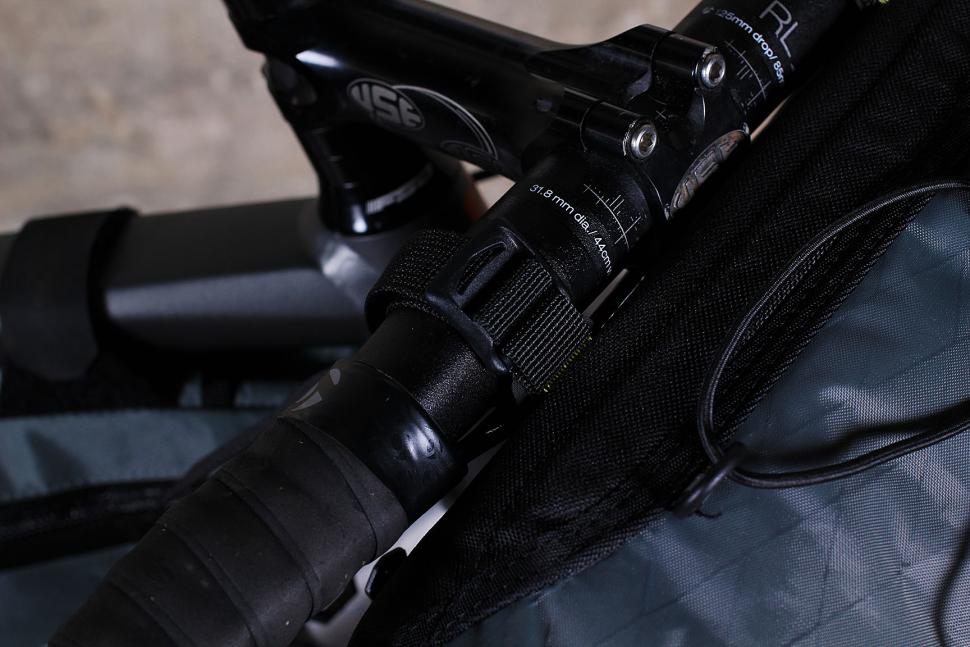
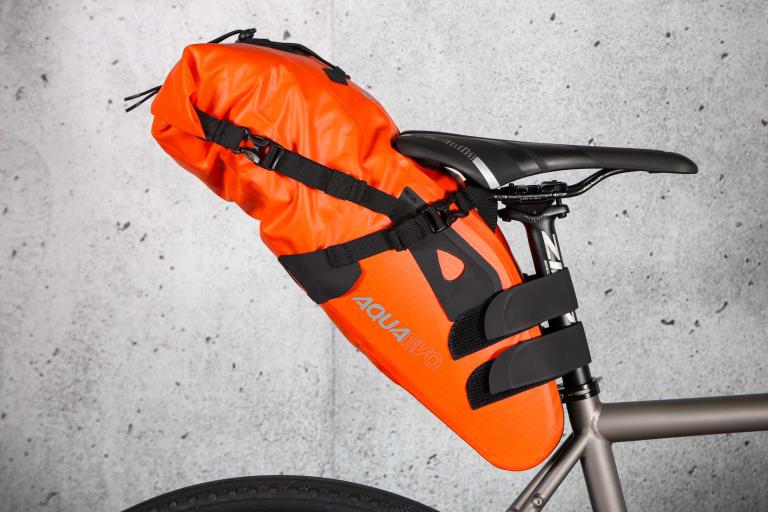
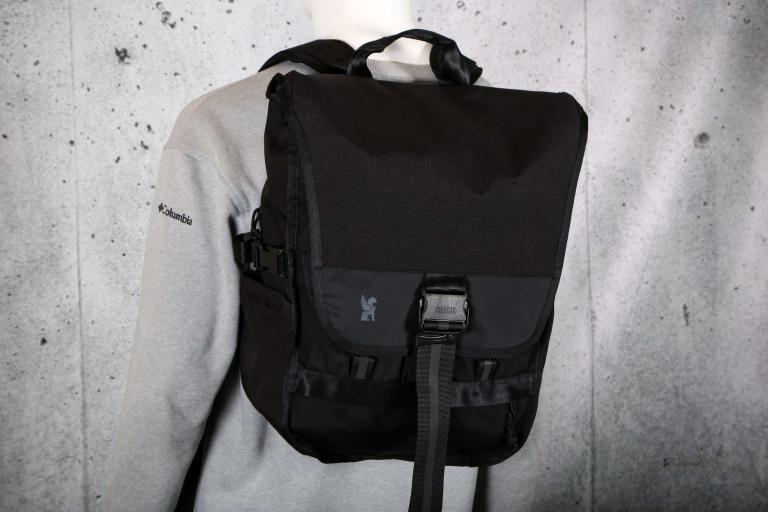
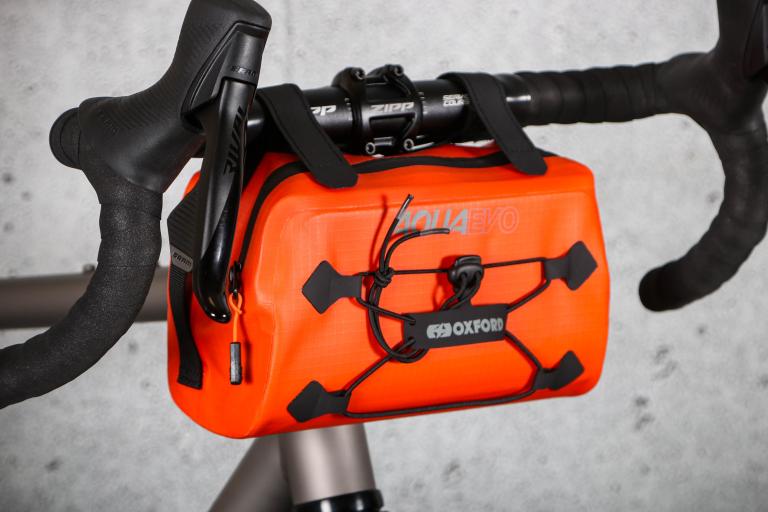
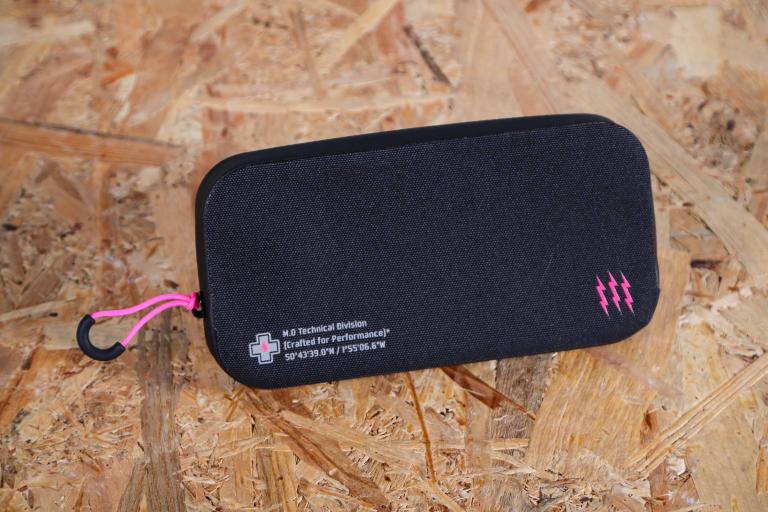
Add new comment
5 comments
There is a waterproof version available, I did review a while ago. Still for road bikes the use is limited although I found with older wider bend bars one can go thru the bends. I need to check back if I can find the picture of my KG 96 with wide bag.
Surely I would go for the front closure fixed width version of macrophotofly!
I have one. Have used it for several trips, both single days and some multi-day trips. The biggest problem with it is the side closure system. I know it allows for some level of compression but the negatives far outweigh that single positive. The side closures take up far too much space and gets in the way of your hands. At some point over the winter I am going to chop the side closures off, and sew the ends up - then cut and sew a zip into the front.
It is then going to be a very fine bag!
Reasons why : it is far better than a standard bar bag (eg rixen and kaul) because it is so light and the weight is under the bars rather than jutting out in front. Having previosuly used the standard bar bags, I find them affecting steering (and especially climbing) in a way this does not. Also the "waterproofness" or rather lack of has never affected me - there is a tiny (and I mean tiny) amount of ingress through the seem when it pours down, but I usually put things in zip-lock bags on multi-day trips anyway.
To my mind they should release a version of this with a zip on the front and the sides closed up ....or I might be taking my future version on Kickstarter!
Needs to be waterproof.
get the waterproof version for the front, and the carradice sqr for the back.
Also mine has a strap for fixing around the head tube/steerer tube, to stop it flapping around as described in the review.
I used this on a Genesis CDF for a 1000km trip this summer along with an Apidura full frame bag and compact saddle bag. It actually worked really well - enough room for spare clothes and down jacket, very simple but solid attachment and didn't have any cable issues. Also very light, which is why you would use it over a traditional bar bag.
The only real improvement would be full waterproofing, which is now available on the new version.
I guess it depends on your setup and approach, but for me I prefer to keep the front end and rear as light as possible and use a full frame bag for the heavy items.
Ok I get the benefits of the saddle bags over panniers for some scenarios, but what does this bring over a standard bar bag with a rixen and kaul style mounting point? It definitely seems to give away a lot of usability...